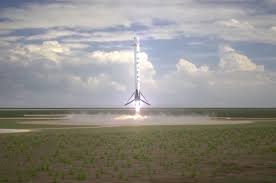
Breaking News
 Battleborn Batteries Responds! Their Overheating Device is a "Feature" not a "Problem
Battleborn Batteries Responds! Their Overheating Device is a "Feature" not a "Problem
 Actor Liam Neeson Outs Himself as MAHA After Narrating Pro-RFK Jr. Documentary Slamming...
Actor Liam Neeson Outs Himself as MAHA After Narrating Pro-RFK Jr. Documentary Slamming...
 Kyle Rittenhouse announced on social media Wednesday that he has tied the knot.
Kyle Rittenhouse announced on social media Wednesday that he has tied the knot.
 JUST IN: President Trump Grants Tina Peters Pardon
JUST IN: President Trump Grants Tina Peters Pardon
Top Tech News
 Build a Greenhouse HEATER that Lasts 10-15 DAYS!
Build a Greenhouse HEATER that Lasts 10-15 DAYS!
 Look at the genius idea he came up with using this tank that nobody wanted
Look at the genius idea he came up with using this tank that nobody wanted
 Latest Comet 3I Atlas Anomolies Like the Impossible 600,000 Mile Long Sunward Tail
Latest Comet 3I Atlas Anomolies Like the Impossible 600,000 Mile Long Sunward Tail
 Tesla Just Opened Its Biggest Supercharger Station Ever--And It's Powered By Solar And Batteries
Tesla Just Opened Its Biggest Supercharger Station Ever--And It's Powered By Solar And Batteries
 Your body already knows how to regrow limbs. We just haven't figured out how to turn it on yet.
Your body already knows how to regrow limbs. We just haven't figured out how to turn it on yet.
 We've wiretapped the gut-brain hotline to decode signals driving disease
We've wiretapped the gut-brain hotline to decode signals driving disease
 3D-printable concrete alternative hardens in three days, not four weeks
3D-printable concrete alternative hardens in three days, not four weeks
 Could satellite-beaming planes and airships make SpaceX's Starlink obsolete?
Could satellite-beaming planes and airships make SpaceX's Starlink obsolete?
Why SpaceX's Rocket Landing On A Drone Ship Is A Big Deal

There couldn't have been a more perfect launch than yesterday's. The sun was shining, a gentle breeze was blowing, and SpaceX's Falcon 9 rocket took off right on schedule. As we watched from a few miles away, the glare of the rocket's flames was searingly bright, hard to look at but impossible to look away from, like the sparklers kids play with on the Fourth of July. The sound, too, was like Independence Day, the boom and shake of a thousand fireworks going off, crashing through the sound barrier.
The cargo made it safely into orbit, where it's on its way to the International Space Station. But the real magic was in what happened after the launch. For the first time ever, the Falcon 9 came down for a gentle (non-explosive) landing on a drone ship. The achievement is critical in developing reusable, relatively low-cost spaceflight.
"It's another step toward the stars," said Musk during a press conference.
Traditionally, rocket boosters fall into the ocean after launch, never to be used again. But Musk often compares that to throwing away an airplane after every flight. Reusing the booster could shave millions of dollars off of launch costs, and the first step to that is getting the boosters back to Earth safely.
"It's another step toward the stars."
SpaceX landed its rocket on solid ground in December, but landing on the drone ship was key to SpaceX's reusability strategy.
That's because about half of all launches bring the rocket over the ocean. After that, the rocket doesn't have enough fuel to turn back around and head for land. The autonomous ship gives SpaceX a movable landing pad, but landing on it proved difficult. It's akin to a jet landing on an aircraft carrier—the target is small and moving—except that the rocket comes down at about 17,000 miles per hour.

 First totally synthetic human brain model has been realized
First totally synthetic human brain model has been realized Mach-23 potato gun to shoot satellites into space
Mach-23 potato gun to shoot satellites into space

